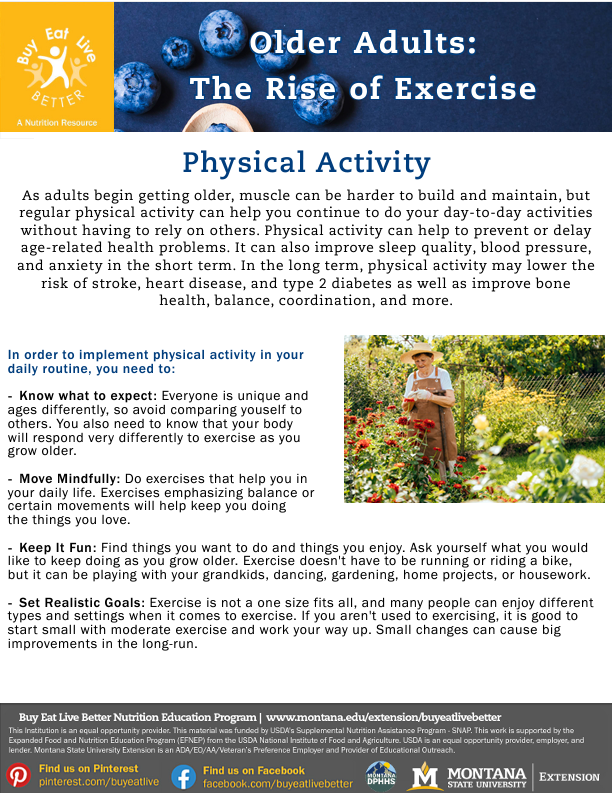Older Adults: The Rise of Exercise

As adults begin getting older, muscle can be harder to build and maintain, but regular physical activity can help you continue to do your day-to-day activities without having to rely on others. Physical activity can help to prevent or delay age-related health problems. It can also improve sleep quality, blood pressure, and anxiety in the short term. In the long term, physical activity may lower the risk of stroke, heart disease, and type 2 diabetes as well as improve bone health, balance, coordination, and more.
In order to implement physical activity in your daily routine, you need to:
- Everyone is unique and ages differently, so avoid comparing yourself to others. You also need to know that your body will respond very differently to exercise as you grow older.
- Do exercises that help you in your daily life. Exercises emphasizing balance or certain movements will help keep you doing the things you love.
- Find things you want to do and things you enjoy. Ask yourself what you would like to keep doing as you grow older. Exercise doesn't have to be running or riding a bike, but it can be playing with your grandkids, dancing, gardening, home projects, or housework.
- Exercise is not a one size fits all, and many people can enjoy different types and settings when it comes to exercise. If you aren't used to exercising, it is good to start small with moderate exercise and work your way up. Small changes can cause big improvements in the long-run.
Types of Activity:
- Older adults should aim for 150 minutes of moderate-intensity aerobic activity a week or 75 minutes of vigorous-intensity aerobic activity.
- Aerobic activities are those that cause you to breathe harder and increase your heart rate. Activity examples include mowing the lawn or raking the leaves, dancing, walking to or at the store, hiking, active forms of yoga, biking, and water aerobics.
- Individuals can mix both moderate and vigorous-intensity activities during the week to meet their needs.
- Muscle strengthening exercises should be incorporated into at least 2 days of the week. These exercises should address all the major muscle groups including legs, hips, back, abdomen, chest, shoulders, and arms.
- Additional activities focusing on balance should also be included in a physical activity routine each week. This may help prevent falls which increase the risk of fractures and other injuries.
- Examples of balance activities include walking backward, standing on one leg, or using a wobbleboard. Strengthening the back, abdomen, and leg muscles also improves balance.


 You may require
You may require